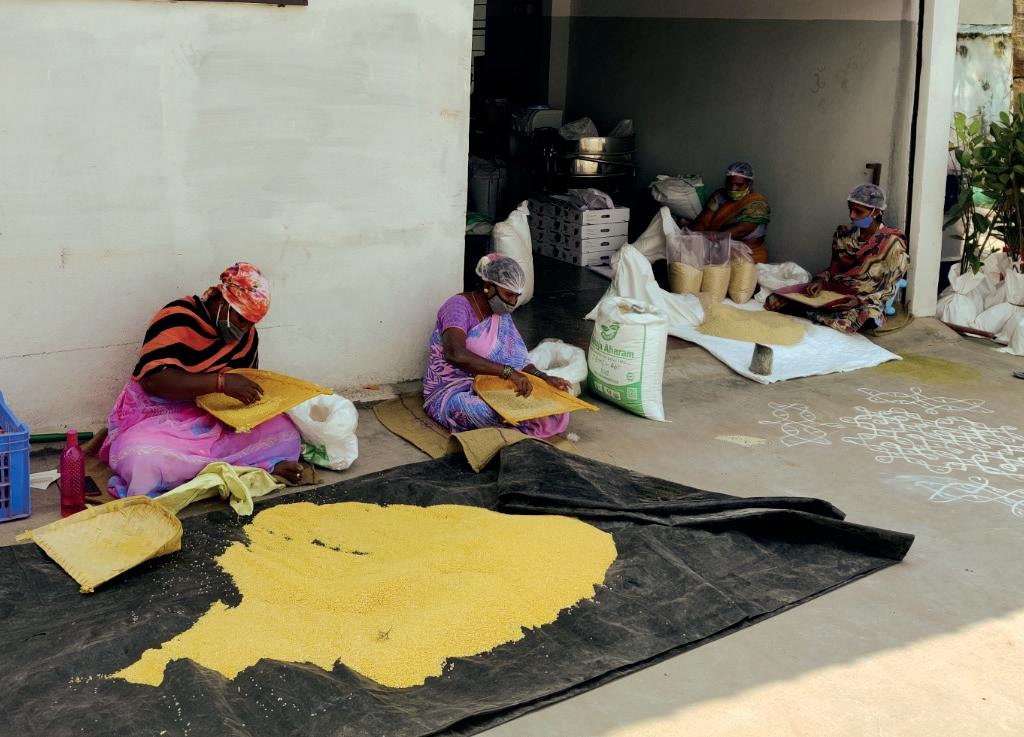
CATERING DIRECTLY to the consumers' needs assures better marketability and incomes. This is what nearly 10,000 farmers of Telangana and Andhra Pradesh have realised over the past decade and are now steering a silent organic movement.
It all began in 2009, when a group of consumers in Hyderabad, then part of unified Andhra Pradesh, established a cooperative society to source chemical-free produce directly from farmers. Operating under the guidance of the Centre for Sustainable Agriculture (CSA), a Hyderabad-based research nonprofit, the cooperative society over a period of time roped in a few farmers and began to sell the produce through a farmer-run retail store in Secunderabad and mobile retail vans that travelled to urban areas. Soon, more and more organic farmers joined the cooperative society and what had started off as a consumers' initiative became a farmers' group. In 2013, when the government floated the concept of farmer producer organisation (FPO) to aggregate collection of produce and create market links for better prices under the Companies Act of 2013, CSA and the cooperative society saw this as an opportunity.
Establishing an FPO also helps gain financial support from the government. Thus, in 2014, all the farmers' groups under the cooperative society registered themselves as organic FPOS, and the society at the helm as Sahaja Aharam Producer Company Limited, a unique "federation" of organic FPOS. That was the year when Telangana was carved out of Andhra Pradesh. But Sahaja Aharam continued its operation as a federation with FPOS from both the states. Today, as many as 23 organic FPOS with over 9,000 farmers across 180 villages are part the federation. The groups are spread over the southern plateau and hills of Andhra Pradesh, as well as the north, central and southern parts of Telangana. The farmers grow paddy, cereals, oilseeds, pulses, fruits, vegetables and spices.
この記事は Down To Earth の August 16, 2022 版に掲載されています。
7 日間の Magzter GOLD 無料トライアルを開始して、何千もの厳選されたプレミアム ストーリー、9,000 以上の雑誌や新聞にアクセスしてください。
すでに購読者です ? サインイン
この記事は Down To Earth の August 16, 2022 版に掲載されています。
7 日間の Magzter GOLD 無料トライアルを開始して、何千もの厳選されたプレミアム ストーリー、9,000 以上の雑誌や新聞にアクセスしてください。
すでに購読者です? サインイン

In leading role again
MOVIES AND WEB SERIES ARE ONCE AGAIN BEING SET IN RUSTIC BACKGROUNDS, INDICATING A RECONNECT BETWEEN CINEMA AND THE COUNTRYSIDE

One Nation One Subscription comes at a huge cost
As top US universities scrap big deals with top scientific publishers, India’s ONOS scheme seems flawed and outdated

Return of Rambhog
Bid to revive and sell the aromatic indigenous paddy variety has led to substantial profits for farmers in Uttar Pradesh's Terai region

Scarred by mining
Natural springs of Kashmir drying up due to illegal riverbed mining

Human-to-human spread a mutation away
CANADA IN mid-November confirmed its first human case of avian influenza, with a teenager in the British Columbia being hospitalised after contracting the H5N1 virus that causes the disease. The patient developed a severe form of the disease, also called bird flu, and had respiratory issues. There was no known cause of transmission.

True rehabilitation
Residents of Madhya Pradesh's Kakdi village take relocation as an opportunity to undertake afforestation, develop sustainable practices

INESCAPABLE THREAT
Chemical pollution is the most underrated and underreported risk of the 21st century that threatens all species and regions

THAT NIGHT, 40 YEARS AGO
Bhopal gas disaster is a tragedy that people continue to face

A JOKE, INDEED
A CONFERENCE OF IRRESPONSIBLE PARTIES THAT CREATED AN OPTICAL ILLUSION TO THE REALITY OF A NEW CLIMATE

THINGS FALL APART
THE WORLD HAS MADE PROGRESS IN MITIGATING EMISSIONS AND ADAPTING TO CLIMATE IMPACTS. BUT THE PROGRESS REMAINS GROSSLY INADEQUATE